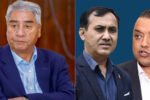Deepfakes refer to fabricated videos generated through digital software, employing machine learning and face-swapping techniques.
Essentially, they are computer-generated artificial videos that merge images to create new footage portraying events, statements, or actions that never occurred.
These manipulated videos are often highly convincing and stand out from other forms of misinformation due to their challenging detection.
How does it work?
The underlying concept behind deepfake technology involves facial recognition.
Users familiar with Snapchat’s face swap or filters functions will recognize the basic premise, where facial features are transformed or augmented.
However, deepfakes take this a step further, producing significantly more realistic results.
A machine learning technique known as a “generative adversarial network” (GAN) is commonly used to create fake videos.
For instance, a GAN can analyze numerous photos of an individual, such as Beyonce, and generate a new image resembling those photos without being an exact copy of any single one.
GANs can also be employed to generate new audio from existing audio or new text from existing text.
The technology is versatile and relies on mapping faces according to “landmark” points, such as the corners of the eyes and mouth, nostrils, and jawline contours.
One of the primary concerns associated with deepfakes, and false information in general, is their potential impact on democratic processes and elections.
A recent survey from UCC revealed that people tend to recall fake news more than real news, with voters potentially forming false memories after exposure to fabricated stories, particularly if those stories align with their political beliefs.
Identifying Deepfakes
To discern the authenticity of videos or images encountered online, critical thinking is crucial.
Asking key questions, such as the motive behind sharing the video, the original source, the time and place of the video’s capture, and whether the individual in the video is expressing unexpected statements, can aid in evaluating its credibility.
Additionally, considering whether the video serves someone else’s agenda and who stands to benefit from it can be enlightening.
Verifying Information Online
With the abundance of information and the rapid dissemination of news online, verifying information has become increasingly challenging.
Developing critical thinking skills is essential for evaluating online content and discerning between genuine and manipulated information in the digital landscape.
t should be noted that a deepfake AI-generated video of Indian actor Rashmika went viral online in November last year, sparking discussions about digital safety.









Comment